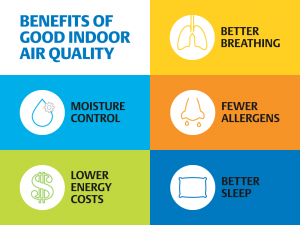Breathing Wellness: How Indoor Hygenics Ensures Your Indoor Air is Pure
In an era marked by environmental awareness and increasing concern for overall well-being, the quality of indoor air has emerged as a pivotal factor in maintaining a healthy and comfortable living environment. Breathing wellness is not merely a matter of personal choice; it is an essential element in fostering physical and mental health. A critical component of achieving indoor air purity is the practice of indoor hygienics. In this article, we delve into the significance of indoor hygienics and its role in ensuring the purity of indoor air.
Understanding the Essence of Indoor Hygienics
Indoor hygienics refers to a series of measures and practices aimed at maintaining a clean, safe, and healthy indoor environment. This encompasses various facets of indoor living, including personal habits, ventilation, cleaning routines, and the use of appropriate technologies to minimize the presence of pollutants and contaminants within enclosed spaces. The ultimate goal of indoor hygienics is to improve indoor air quality while mitigating the risk of health-related issues that can arise from exposure to airborne toxins.
The Impact of Poor Indoor Air Quality
Before delving deeper into the concept of indoor hygienics, it is vital to appreciate the significance of addressing poor indoor air quality. Contrary to common belief, indoor air can often be more polluted than outdoor air. A multitude of factors contribute to this phenomenon, including the presence of volatile organic compounds (VOCs), dust mites, mold, and even air pollutants released from household items and building materials. The consequences of prolonged exposure to subpar indoor air quality are manifold, ranging from respiratory issues and allergies to more severe health conditions, such as asthma and cardiovascular diseases. Additionally, poor indoor air quality can affect cognitive function and exacerbate mental health concerns.
Indoor Hygienics: A Holistic Approach
Indoor hygienics embraces a holistic approach to tackle these air quality issues. It involves a combination of strategies and techniques, all of which are meticulously designed to create a safe and pure indoor environment. Here are some fundamental elements of indoor hygienics:
- Proper Ventilation: Adequate ventilation is the backbone of indoor hygienics. A well-ventilated space allows for the exchange of indoor and outdoor air, minimizing the accumulation of indoor pollutants. This can be achieved through natural ventilation (windows and doors) or mechanical ventilation systems.
- Regular Cleaning and Maintenance: Keeping your indoor space clean is essential. Regular dusting, vacuuming, and cleaning of surfaces help reduce the buildup of allergens and contaminants. Additionally, timely maintenance of HVAC systems, filters, and air ducts is crucial to ensure they function efficiently.
- Humidity Control: Maintaining an optimal indoor humidity level is vital. High humidity can encourage mold growth, while low humidity can lead to dry and irritated respiratory passages. Humidifiers and dehumidifiers can help in this regard.
- Minimizing VOCs: Volatile organic compounds are released by various household items, such as paints, cleaning products, and furniture. Opt for low-VOC or VOC-free alternatives to minimize indoor air pollution.
- Indoor Plants: Certain houseplants are known for their air-purifying properties. Incorporating these into your living space can help remove toxins from the air.
- Air Purification Technology: High-quality air purifiers equipped with HEPA filters and advanced filtration systems can significantly enhance indoor air quality by removing particles and pollutants.
- Regular Inspection for Mold and Allergens: Frequent checks for mold and allergens can help identify issues early and prevent them from spreading, thus ensuring a healthier indoor environment.
The Psychological Benefits of Pure Indoor Air
While the physical health benefits of breathing clean indoor air are well-documented, the psychological advantages are often underestimated. Pure indoor air can have a remarkable impact on one’s mental well-being. Research has indicated that improved indoor air quality can lead to increased productivity, reduced stress levels, and enhanced cognitive function. In essence, breathing wellness translates not only to better physical health but also to a higher quality of life.
Holistic Approaches to Breathing Wellness
Breathing wellness extends beyond the confines of one’s home. It pertains to the broader context of indoor environments, including workplaces and public spaces. Organizations are increasingly recognizing the importance of indoor air quality and adopting indoor hygienics practices to enhance the health and productivity of their employees. Implementing comprehensive indoor hygienics policies and technologies in these spaces can lead to a more inclusive and health-conscious society.
The Role of Regulation and Policy
Governments and regulatory bodies worldwide are also acknowledging the significance of indoor air quality and implementing regulations and standards to ensure public safety. These standards encompass building design, ventilation requirements, and the use of eco-friendly materials in construction, further emphasizing the importance of indoor hygienics.
Conclusion
In the pursuit of breathing wellness, understanding the value of indoor hygienics is paramount. A clean, safe, and healthy indoor environment is not just a luxury; it is a necessity for the modern individual. By embracing a holistic approach to indoor hygiene, we can achieve pure indoor air, leading to both improved physical health and enhanced mental well-being. As individuals, organizations, and societies continue to recognize the critical importance of breathing wellness, we take a collective step toward a healthier and more prosperous future.

